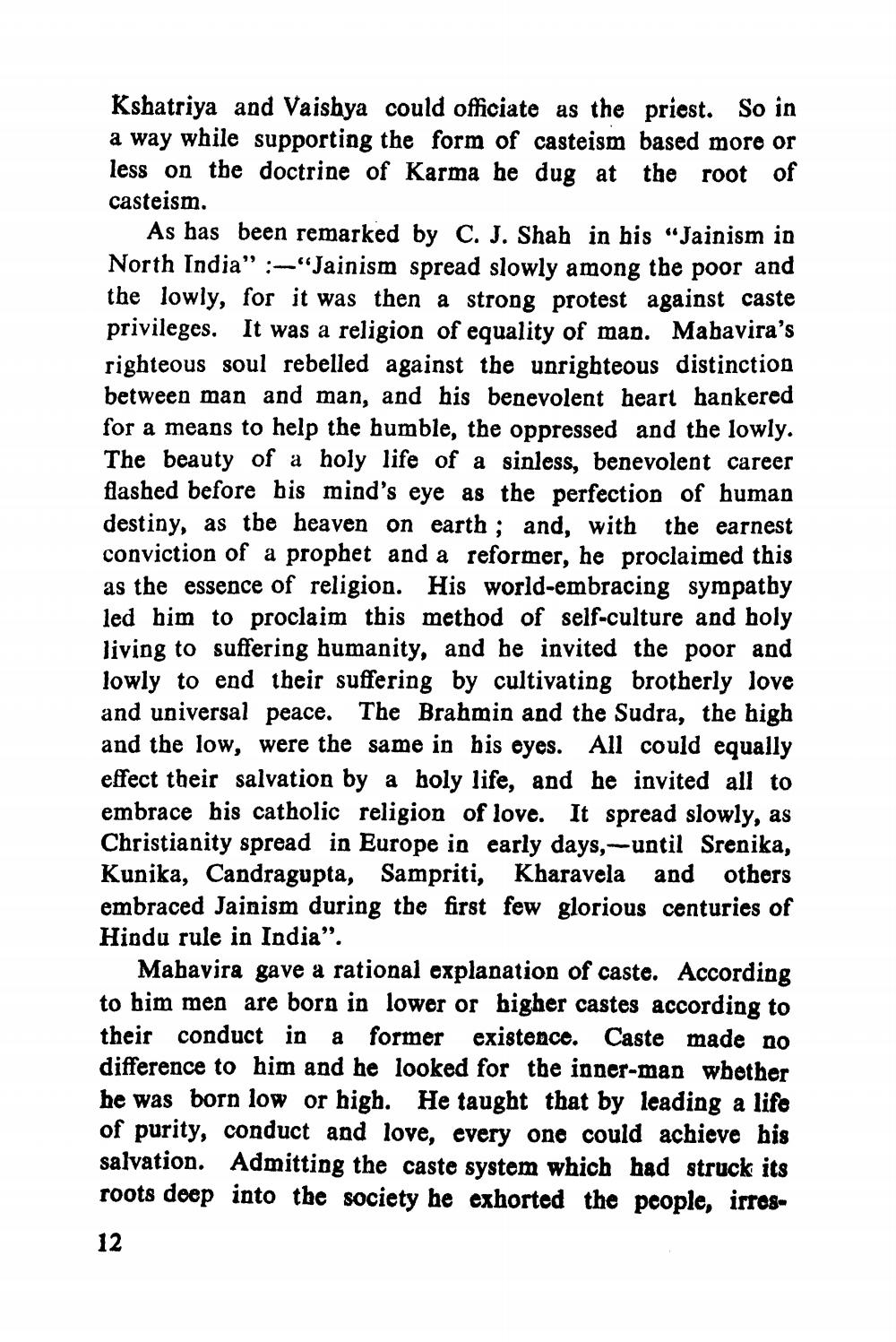________________
Kshatriya and Vaishya could officiate as the priest. So in a way while supporting the form of casteism based more or less on the doctrine of Karma be dug at the root of casteism.
As has been remarked by C. J. Shah in his “Jainism in North India" :-"Jainism spread slowly among the poor and the lowly, for it was then a strong protest against caste privileges. It was a religion of equality of man. Mabavira's righteous soul rebelled against the unrighteous distinction between man and man, and his benevolent heart hankered for a means to help the humble, the oppressed and the lowly. The beauty of a holy life of a sinless, benevolent career flashed before his mind's eye as the perfection of human destiny, as the heaven on earth ; and, with the earnest conviction of a prophet and a reformer, he proclaimed this as the essence of religion. His world-embracing sympathy led him to proclaim this method of self-culture and holy living to suffering humanity, and be invited the poor and lowly to end their suffering by cultivating brotherly love and universal peace. The Brahmin and the Sudra, the high and the low, were the same in his eyes. All could equally effect their salvation by a holy life, and he invited all to embrace his catholic religion of love. It spread slowly, as Christianity spread in Europe in early days,- until Srenika, Kunika, Candragupta, Sampriti, Kharavela and others embraced Jainism during the first few glorious centuries of Hindu rule in India”.
Mahavira gave a rational explanation of caste. According to bim men are born in lower or higher castes according to their conduct in a former existence. Caste made no difference to him and he looked for the inner-man wbether he was born low or high. He taught that by leading a life of purity, conduct and love, every one could achieve his salvation. Admitting the caste system which had struck its roots deep into the society he exhorted the people, irres12




